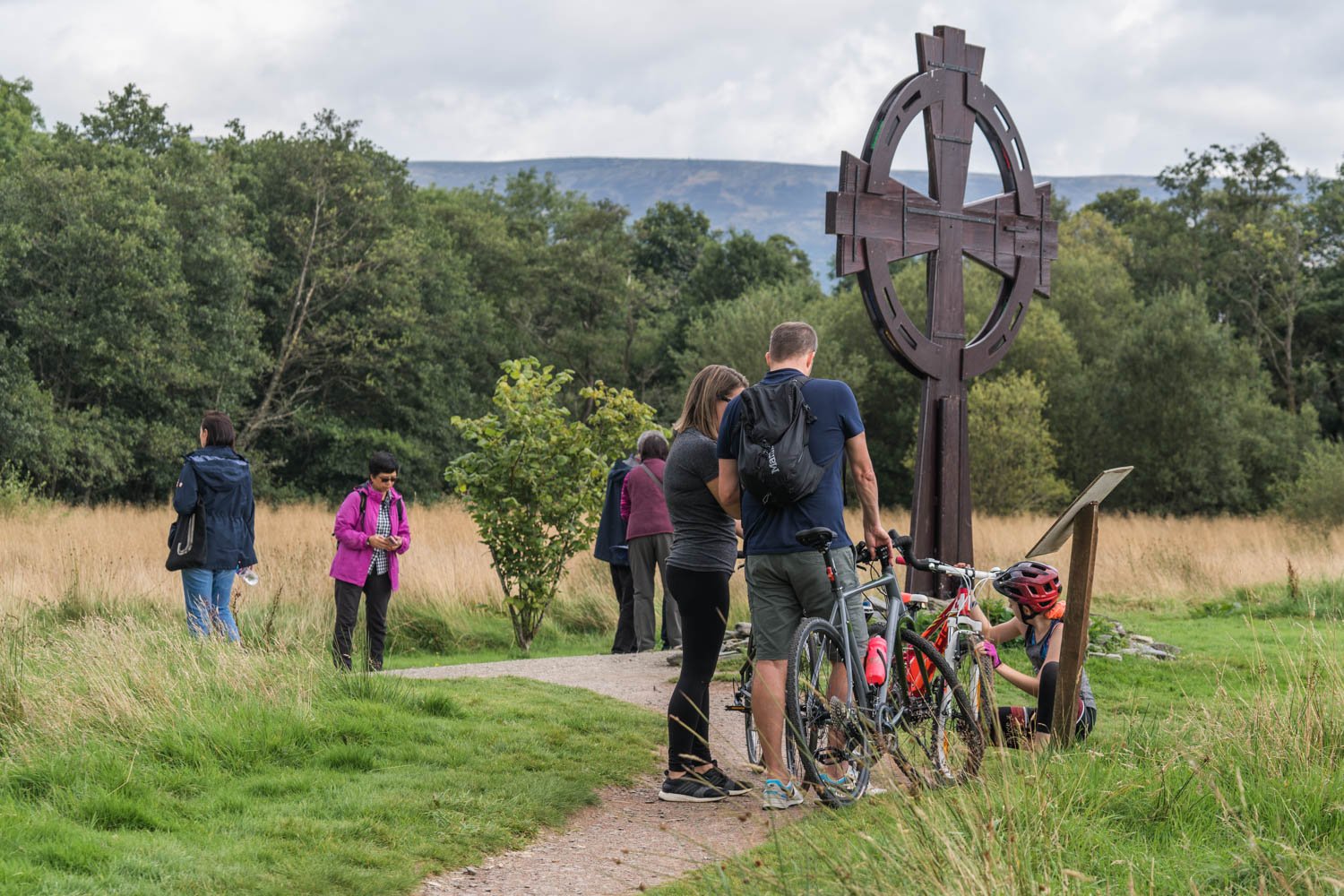Park Stories: A Pilgrimage in the National Park
Luss
Places with religious associations are sometimes rather overlooked. Of course, ancestor hunters make for kirkyards, but these trips are rather specific, and not really related to a sense of place. A variety of themes link these sites of which architecture may be the most obvious, but above all, whether you are religious or not, they are a significant local asset.
Some Celtic Saints of the Loch Lomond and Trossachs National Park
St Angus associated with Balquhidder and Lochearnhead
St Berach associated with Aberfoyle
St Blane associated with Lochearnhead
St Chug associated with Kilmahog
St Colmoc associated with Inchmahome
St. Drostan, associated with Craigrostan,
St Fillan, associated with Glen Dochart and Killin
St Kessog associated with Callander and with Luss
St Mo-Laise associated with Aberfoyle
St Bride’s Chapel, Loch Lubnaig is dedicated to St Brigid of Kildare.
Place names that begin with Kil- (church or burial ground) usually indicate early missionary activities by Celtic saints. Sometimes, as is the case with both Kilmahog and Killin it is not always clear which saint. Annat usually means the site of an abandoned church.
Many churches in the National Park have been built on the sites of medieval churches. Of medieval sites, Walter Comyn, 4th Earl of Menteith, founded the Augustinian Priory, dedicated to St. Macolmoc, on an island in the Lake of Menteith, in 1238. The buildings are probably by the same masons who built the cathedral in Dunblane. Inchmahome, which is reached by ferry from Port of Menteith makes a suitable starting point for a pilgrimage in the eastern part of the National Park.
A few minutes walk from the ferry is Port of Menteith Parish Church [NN 583 011], built in 1878 to designs by John Honeyman. There is a significant Graham mausoleum by the lake.
From the Port proceed to Aberfoyle. Even walkers should go by bus since there is no satisfactory path, but otherwise they can make the whole pilgrimage to Killin on foot.
James Miller, who, among other things, designed West Highland Railway stations, designed St Mary’s Episcopal Church [NN 524 010]. Workers from the slate quarry erected the pretty ‘Arts and Crafts’ church in 1892-3.
John Honeyman built Aberfoyle Parish Church [NN 518 005], set at the foot of Craigmore, in 1870 in early-Gothic style. It replaced the old kirk of Aberfoil, reached by crossing the bridge in the village. In the graveyard are two notable graves: Robert Kirk (1644-1692) and Rev Patrick Graham (1750-1835)
From Aberfoyle motorists can cross the Duke’s Pass to the Trossachs Church or Achray Chapel, arguably the best situated in Scotland, The long-serving minister William Wilson was the author of an impressive book The Trossachs in Literature and Tradition (1908) is buried there.. Walkers and cyclists should proceed directly to Callander, walkers by the Roman Road, cyclists by RN 7
There are several treats in Callander; a spectacular former Parish Church, now a visitor centre, the equally interesting Parish Church, and St Andrews Episcopal Church [NN 624 080], sheltered by a magnificent cedar of Lebanon. There are also three notable graveyards; Tom na Chessaig, at the bridge; Little Leny, where Dugald Buchanan is buried, and St Chug’s Chapel at Kilamahog. Beyond Kilmahog walkers and cyclists follow the west bank of Loch Lubnaig at the foot of which is the curious Esher Chapel, built beside Stank Falls. Motorists follow the west bank. St Bride’s Chapel, at an awkward corner on the A84, features in Lady of the Lake and is where some of the American president McKinlay’s forebears are buried.

